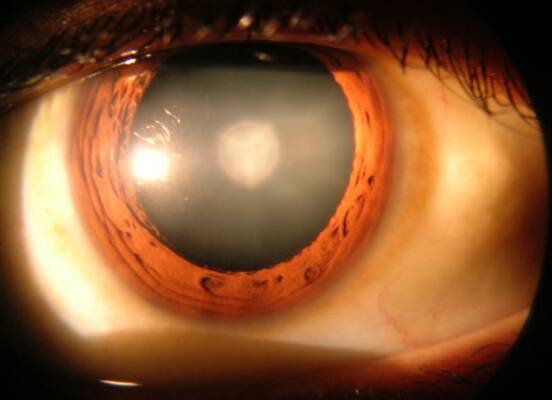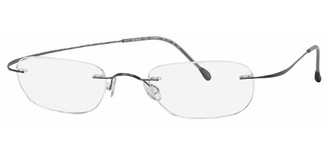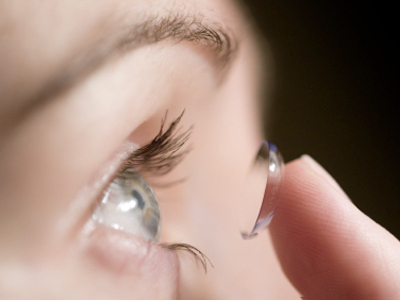(972) 395-8434
3720 N. Josey Ln.
Carrollton, TX 75007
OUR SERVICES
Eye Infections, Eye Injuries, and Removal of Foreign Objects:
 Our office provides emergency services for eye infections and eye injuries and removal of foreign objects. Please call our office at (972) 395-8434. Our microscopes allow us to examine the front surface of the eye and facial areas around the eye for infection or injury. After assessing the extent of the injury or infection a treatment plan will be formulated and explained to you. Treatment may include medications and supportive care. Follow-up visits to monitor your recovery will be scheduled as needed.
Our office provides emergency services for eye infections and eye injuries and removal of foreign objects. Please call our office at (972) 395-8434. Our microscopes allow us to examine the front surface of the eye and facial areas around the eye for infection or injury. After assessing the extent of the injury or infection a treatment plan will be formulated and explained to you. Treatment may include medications and supportive care. Follow-up visits to monitor your recovery will be scheduled as needed.
COMMON EYE TERMINOLOGY
Nearsighted (myopia)
 Type of vision in which seeing at far is blurry. Near vision is often good. This condition usually begins between ages 6 to 21 and may gradually worsen until after 30. Contact lenses or glasses are indicated.
Type of vision in which seeing at far is blurry. Near vision is often good. This condition usually begins between ages 6 to 21 and may gradually worsen until after 30. Contact lenses or glasses are indicated.
Farsighted (hyperopia)
 Type of vision in which seeing is strained at near more than far. Distance vision is often very good. This condition causes your eyes to overwork for reading and other close work and distant viewing. Usual symptoms are headaches and eyestrain. Contact lenses or glasses are indicated.
Type of vision in which seeing is strained at near more than far. Distance vision is often very good. This condition causes your eyes to overwork for reading and other close work and distant viewing. Usual symptoms are headaches and eyestrain. Contact lenses or glasses are indicated.
Astigmatism
 Very common and not an eye disease. Symptoms include headaches, eyestrain and squinting. Caused by the eye not focusing light the same up and down as across. Usually occurs in conjunction with myopia or hyperopia. Contact lenses or glasses are indicated.
Very common and not an eye disease. Symptoms include headaches, eyestrain and squinting. Caused by the eye not focusing light the same up and down as across. Usually occurs in conjunction with myopia or hyperopia. Contact lenses or glasses are indicated.
Presbyopia
 A reduction of focusing ability for anything closer than an arm’s length causing blurring and eyestrain. This usually begins in the late 30’s to early 40's and worsens with age. Multifocals (such as progressive no-line multifocals or bifocals) or reading glasses are indicated.
A reduction of focusing ability for anything closer than an arm’s length causing blurring and eyestrain. This usually begins in the late 30’s to early 40's and worsens with age. Multifocals (such as progressive no-line multifocals or bifocals) or reading glasses are indicated.
Amblyopia
 Often called “lazy eye.” This eye is not able to see 20/20 even with best corrective lenses. Can only be diagnosed by a complete eye examination. Vision therapy is sometimes needed along with glasses. Many cases cannot be helped if they are detected too late.
Often called “lazy eye.” This eye is not able to see 20/20 even with best corrective lenses. Can only be diagnosed by a complete eye examination. Vision therapy is sometimes needed along with glasses. Many cases cannot be helped if they are detected too late.
Glaucoma
 A group of diseases that leads to blindness often without any pain or symptoms until late in the disease process. Currently there is no cure, but with treatment the disease process can be slowed or stalled. A complete eye examination is needed to diagnose this silent blinder.
A group of diseases that leads to blindness often without any pain or symptoms until late in the disease process. Currently there is no cure, but with treatment the disease process can be slowed or stalled. A complete eye examination is needed to diagnose this silent blinder.
Cataract
 A normal physiological change that occurs in the lens of all of our eyes as we age. The young, clear lenses in our eyes become hazy and cloudy as we age leading to a loss of vision and possible changes in our glasses' prescription. Annual eye examinations are recommended in order to monitor these natural changes and to make the timely decision for surgical extraction of the cataract.
A normal physiological change that occurs in the lens of all of our eyes as we age. The young, clear lenses in our eyes become hazy and cloudy as we age leading to a loss of vision and possible changes in our glasses' prescription. Annual eye examinations are recommended in order to monitor these natural changes and to make the timely decision for surgical extraction of the cataract.
Diabetic Retinopathy
 Diabetes is the leading cause of blindness in adults 20 to 74 years old. The American Diabetes Association recommends dilated eye examinations every year because diabetes affects the tiny blood vessels in the back of the eye. Diabetes can cause these small blood vessel to leak or bleed in the eye, as well as eye swelling, which can lead to vision loss. It is estimated that one-third of Americans who have diabetes don't know it. We may detect the disease before your primary care physician does, especially if you're overdue for a physical. Early detection can prevent permanent vision loss.
Diabetes is the leading cause of blindness in adults 20 to 74 years old. The American Diabetes Association recommends dilated eye examinations every year because diabetes affects the tiny blood vessels in the back of the eye. Diabetes can cause these small blood vessel to leak or bleed in the eye, as well as eye swelling, which can lead to vision loss. It is estimated that one-third of Americans who have diabetes don't know it. We may detect the disease before your primary care physician does, especially if you're overdue for a physical. Early detection can prevent permanent vision loss.
Macular Degeneration
 Macular Degeneration is the leading cause of blindness in adults 55 and older. Early detection is critical as there are now new treatments available to stall vision loss and in some cases restore lost vision.
Macular Degeneration is the leading cause of blindness in adults 55 and older. Early detection is critical as there are now new treatments available to stall vision loss and in some cases restore lost vision.
Dry Eye Syndrome
 The tears your eyes produce are necessary for overall eye health and clear vision. Dry eye means that your eyes do not produce enough tears or that you produce tears which do not have the proper chemical composition. Often, dry eye is part of the natural aging process. It can also be caused by blinking or eyelid problems, medications like antihistamines, oral contraceptives and anti-depressants, a dry climate, wind and dust, general health problems like arthritis or Sjogren's syndrome and chemical or thermal burns to your eyes.
The tears your eyes produce are necessary for overall eye health and clear vision. Dry eye means that your eyes do not produce enough tears or that you produce tears which do not have the proper chemical composition. Often, dry eye is part of the natural aging process. It can also be caused by blinking or eyelid problems, medications like antihistamines, oral contraceptives and anti-depressants, a dry climate, wind and dust, general health problems like arthritis or Sjogren's syndrome and chemical or thermal burns to your eyes.
If you have dry eye, your symptoms may include irritated, scratchy, dry, uncomfortable, or red eyes, a burning sensation or the feeling of something foreign in your eyes and blurred vision. Excessive dry eyes may damage eye tissue, scar your cornea (the front covering of your eyes) and impair vision and make contact lens wear difficult.
 If you have symptoms of dry eye, see us for a comprehensive examination. Dry eye cannot be cured, but we can prescribe treatment so your eyes remain healthy and your vision is unaffected. Some treatments that we might prescribe include increasing humidity at home or work, using artificial tears and/or a moisturizing ointment, especially at bedtime. In some cases, small plugs are inserted in the corner of the eyes to slow tear drainage. Sometimes, surgical closure of the drainage ducts may be recommended.
If you have symptoms of dry eye, see us for a comprehensive examination. Dry eye cannot be cured, but we can prescribe treatment so your eyes remain healthy and your vision is unaffected. Some treatments that we might prescribe include increasing humidity at home or work, using artificial tears and/or a moisturizing ointment, especially at bedtime. In some cases, small plugs are inserted in the corner of the eyes to slow tear drainage. Sometimes, surgical closure of the drainage ducts may be recommended.




Our office is privately owned and directly part of this community. We want you to have sharp vision and great comfort with your eyewear and contact lenses.
 The health of your eyes is our number one concern. That's why we stand behind our products and services with warranties, and a professional, experienced staff.
The health of your eyes is our number one concern. That's why we stand behind our products and services with warranties, and a professional, experienced staff.



